This post was last updated on July 21, 2022 by Preethi Sukumaran
“What are the ingredients in a baby soap and why do you recommend we use a baby ubtan instead?”
This is a common question we receive at Krya. My curiosity about this question prompted me to do a search. Google tells me that common searches made around baby soaps include: “best soap for newborn skin”, “newborn baby soap”, and “natural soap”, and “homemade soap for baby”. Interestingly, all these come under the larger umbrella of parents seeking information on exactly what goes into a baby soap.
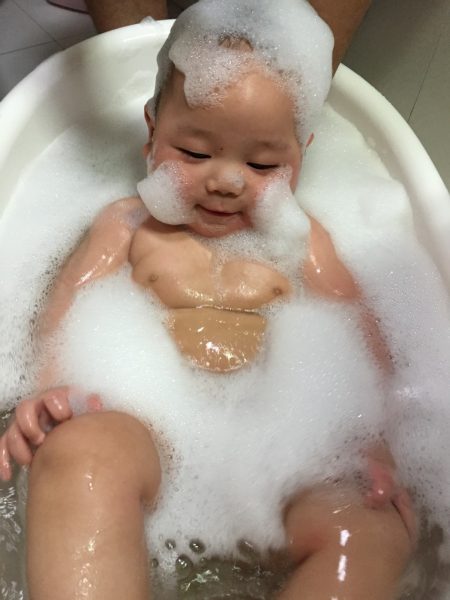
What exactly goes into a baby soap? Information is not transparent or available
Sadly, if you type the search term “ingredients in a baby soap”, all you get are product advertisements for baby soaps. Nowhere do you get any information on what goes into a baby soap and whether these ingredients are safe.
So as a part of the Krya Baby Skin 101 series, we decided to do a post on this subject. Once you have found out the ingredients in a baby soap, would you even consider using one on your baby?
We hope not and hope this post will explain why. Read on.
What are the ingredients of a soap?
Historically, soaps were used only to clean laundry and fabric. Their discovery was accidental. Atleast 5000 years ago, it was discovered that when rain water mixed with wood ash, a highly alkaline, caustic substance called Lye was made. When Lye was poured on dirty fabric, it bleached and removed stains on fabric.

Soap: historically harsh and caustic – used to clean laundry and fabric
However, Lye was extremely caustic and corrosive. It could make you blind and burn your skin off. So, the ancients learn to bring down the caustic properties of Lye, by making a salt. When Lye and vegetable oil were mixed together, soap was made, which is chemically a salt.
This new salt, contained the same alkaline properties of Lye, but it was slightly milder compared to using plain Lye. However, even this milder soap was still quite corrosive. Therefore, it was used to wash the dirtiest fabric and linen to remove pre-historic dirt and stains.
So historically, the ingredients in a soap were just 2: Natural Lye and Natural vegetable oil. These 2 ingredients were combined and made into a soft paste initially and used to wash fabric.
How did soap make the transition from laundry to skin?
Soap started being used to clean skin in medieval Europe. This was a regressive move, when you consider how evolved skin care had gotten in ancient India, Greece and even Medieval Islamic countries. With the spread of Ayurveda and herbal knowledge from India, the utilization of herbs, oils, clays and special herbal mixtures had become very advanced in all these regions. Floral extracts and essential oil production techniques had also filtered from India to regions like Damascus, and Syria and these techniques and skin care methods were adopted.
Meanwhile in the rest of Medieval Europe, because of the colder conditions and medical techniques practiced, there was a fear around the use of water. From the 10th century to well beyond the Elizabethan Era, there was a rising fear around water and frequent baths.
This was compounded by cold conditions and very low temperature of water and lack of indoor plumbing or heated water systems. The result: baths were taken very infrequently. The nobility bathed once a month or less. Poorer people bathed once a year, and this year was a designated holiday.
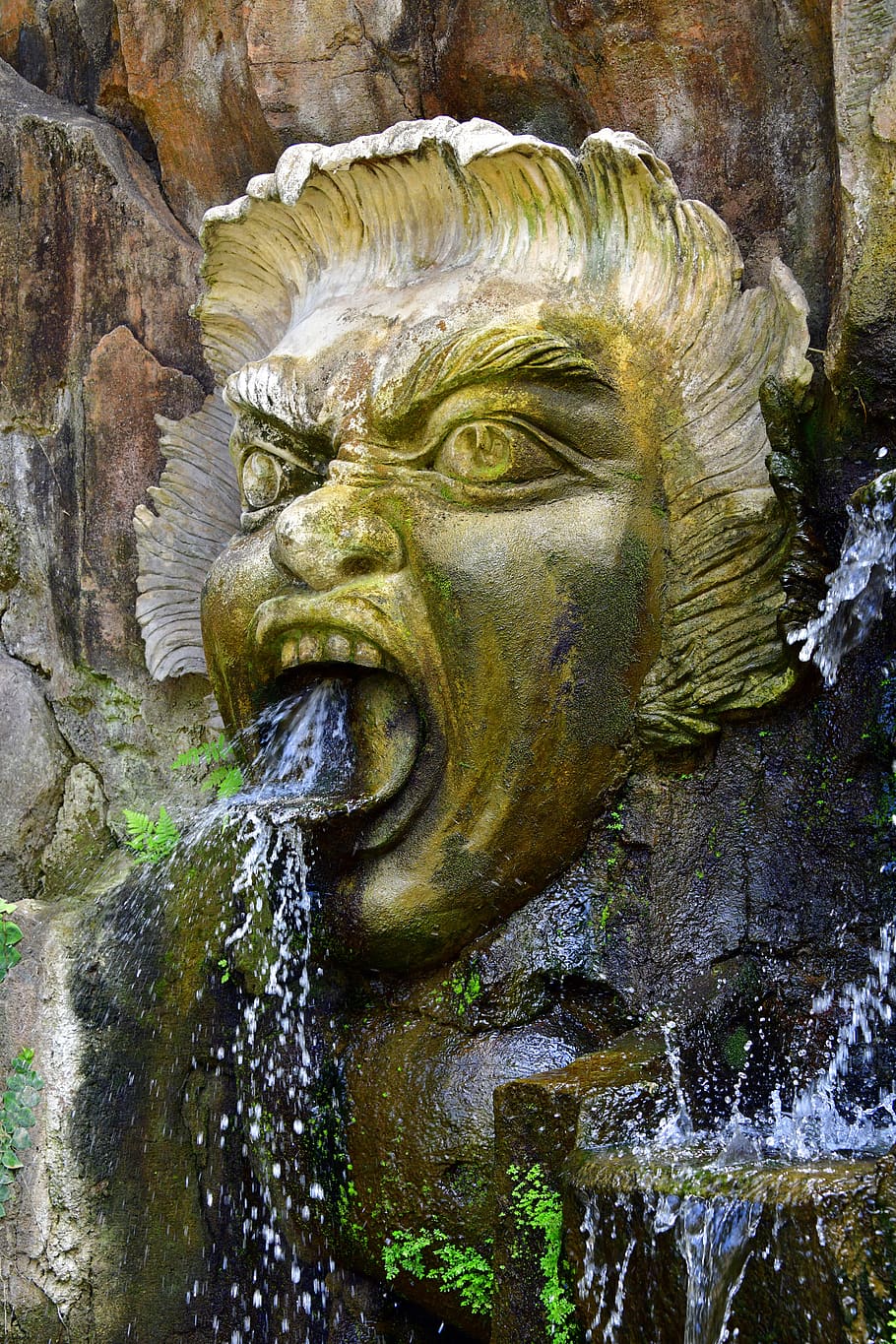
Medieval Europe characterized by fear around regular bathing
As people were bathing very rarely, a very strong, harsh and alkaline soap become popular to remove accumulated dirt and dead cells. The easy availability of tallow due to animal husbandry practices, meant that soap could be easily made at farmsteads and manor homes. The poor people made do with a simple lye-tallow soap. Richer people and gentry were able to add perfumed oils into the mix and also after bath to give bathing a better experience.
Soap in modern India – killing traditional practices
The practice of bathing with soap is a post-Independence phenomenon in India. Until the 1950s, village industries flourished and the joint family set up ensured traditional practices were followed. Soaps and shampoos were not available. Once multinational companies began making their appearance in India, they started promoting “modern” soaps and shampoos to Indians, deriding our traditional practices.
Heavy advertising, the use of celebrities to promote the practices, the rise of beauty pageants with multinational sponsorship and heavy use of cheap, industrial fragrances, all helped cement soaps firmly in India’s mind.
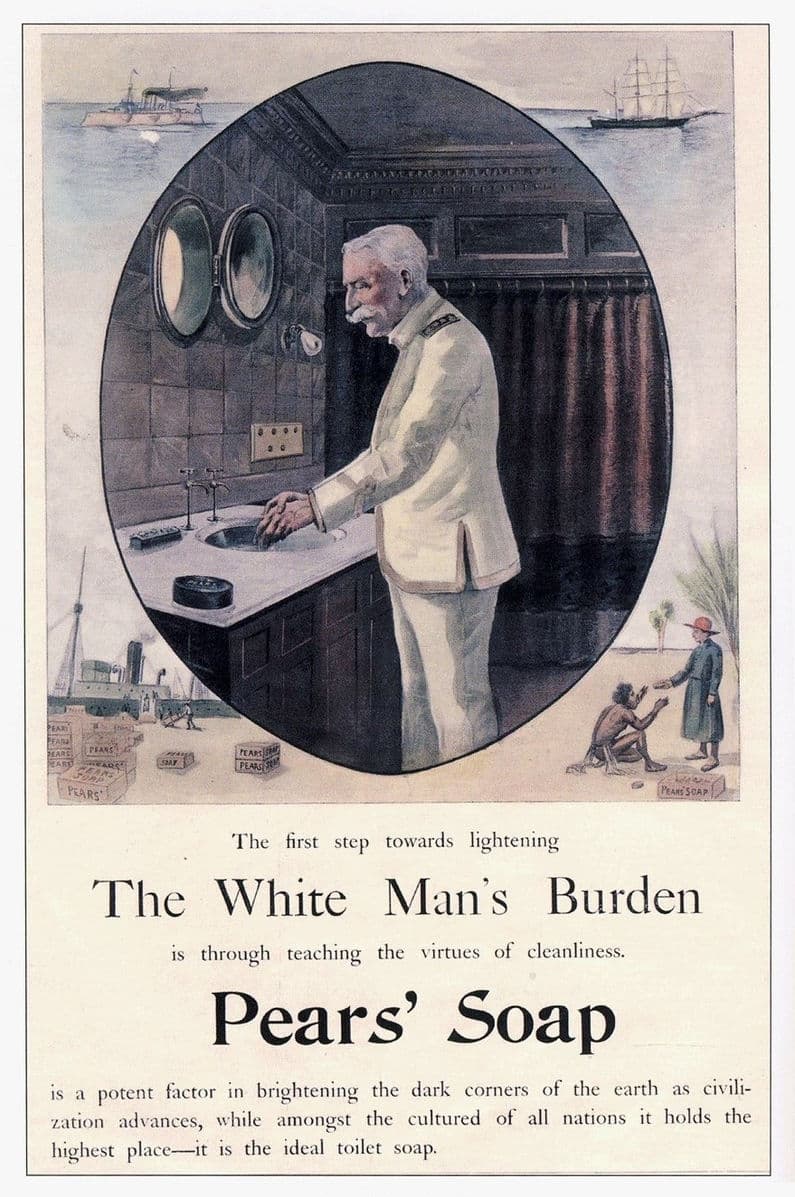
Pears Soap advertising – 1890 – highly racist and white supremacist
Traditional bathing utilized seasonal herbs, grains and clays. Recipes could be tailormade by season and availability of fresh herbs. Recipes were also tailormade for different groups of people. Baby ubtans were lovingly made by the women in the family using the best available ingredients. Ubtans for post-partum women included warming, vata reducing, mood uplifting herbs. Men who went out frequently and subjected to high sun exposure were given cooling herbs and rich clays to bathe in. The traditional bathing practice had something for everyone. Skin health, dosha balance and mood upliftment were all neatly taken care of.
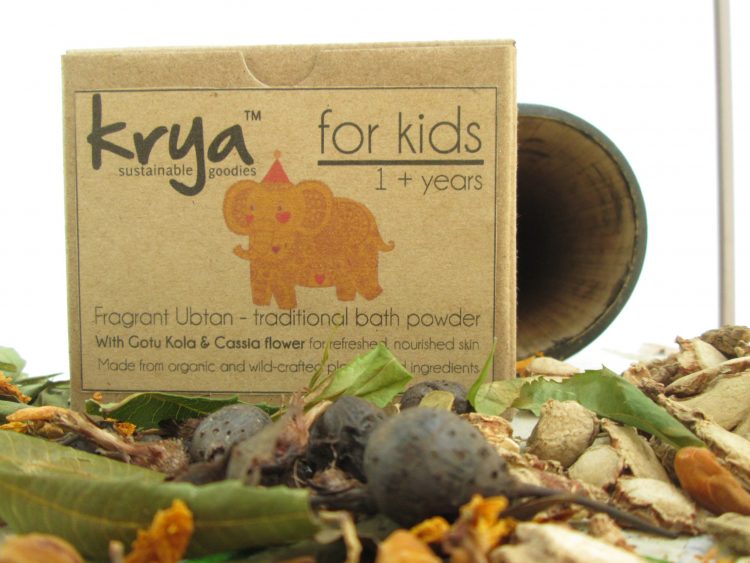
As soaps became more and more popular, the whole ecosystem behind traditional bathing practices began to collapse one by one. First with the loss in joint family set up, we lost family knowledge about herbs. With lack of interest in these products, there was no economic opportunity for the collectors of herbs. As herb processors found their machines rusting due to lack of use, the small village industries which locally processed these products went out of business.
As MNCs began aggressively spending behind retail space and advertising, retail stores stopped promoting these traditional products. When people started moving to nuclear and urban set-ups, the only place they could remember these practices became the kirana and retail stores. With no retail store promoting traditional skin and hair care products, the urban consumer fully became ensnared with chemical soaps and shampoos.
Thus a 5000+ year old wonderful, eco-friendly, healthy tradition of complete skin and hair care was lost to us. So today, we have to write blog posts at Krya explaining how a soap is dangerous for you and an ubtan is better!
What are the ingredients in a baby soap?
Let us analyze the most popular brand of synthetic baby soap. The ingredients listed on the pack are as follows:
- Sodium Palm Kernelate
- Sodium Palmate
- Water
- Mineral Oil
- Sodium Chloride
- Fragrance
- Glycerin
- Titanium dioxide
- Dimethicone
- C12-C15 Alkyl Benzoate
- Disodium EDTA
- Stearoxytrimethylysilane
- Stearyl Alcohol
- Disodium Etidronate
- Tocopherol Acetate
- Hydrolysed Milk Protein
As per Drug & Cosmetic guidelines, the ingredients should be listed from largest to smallest. The 15th ingredient is a synthetic compound which resembles the chemical structure of Vitamin E. The 16th ingredient is a synthetic extract of Casein. Casein is commonly found in Milk. These 2 ingredients are what the company heavily advertises as going into its soap.
This misleads parents into believing that this synthetic baby soap is full of Milk. Milk was also traditionally used in baby ubtans to make a paste. Parents conclude that this chemical soap is similar to a traditional baby ubtan with milk for their baby. Nothing could be further from the truth.
As per Drugs & Cosmetics guidelines, Tocopherol and Casein form the smallest part of this chemical baby soap.
How small?
We can only make a guess as percentages are not listed on the pack. But as per our experience, these 2 ingredients can be as small as under 0.25% in the final product. Therefore, this is DEFINITELY not the same as a traditional baby ubtan mixed in milk.
How are commercial baby soaps made?
All soaps need to be made with some form of oil / fat. Historically beef tallow was in use. We can also make soaps using edible vegetable oils like coconut oil, sesame oil, etc. if we wish. BUT, a mass-produced soap which costs around Rs.10 in the smallest size cannot afford to use edible vegetable oils.
Hence, chemical soaps are made into a slurry, which is cement-like using synthetic cleansing agents, water, salt, fragrance and synthetics which give a soft feel on skin. This whole mass is churned into a slurry and then poured into moulds to set quickly. The presence of binding agents like Sodium Chloride help “set” the soap and form a hard mass.
The 1st two ingredients in the listing are Sodium Palm Kernelate & Sodium Palmate. Sodium Palm Kernelate is a detergent surfactant. It is chemically a salt of Palm oil – so it is a synthetic version of a soap. However, it is much harsher on skin, as it is chemically very close to a detergent. It strips natural oils quickly and aggressively from skin.
Apart from being an aggressive surfactant, Sodium Palm Kernelate is also an emulsifying agent. So, in the presence of water it forms a thick, soft dispersion which feels moisturizing on skin. However, this only “feels” moisturizing, as in reality it is a simple detergent.
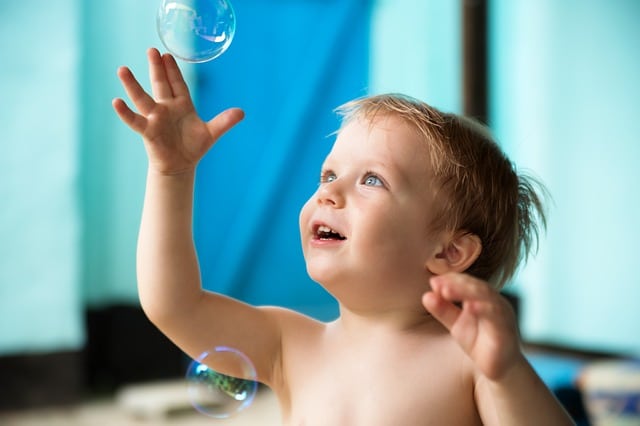
If parents were made aware of what goes into a baby soap, many of them would choose not to buy this product!
Disodium EDTA & Disodium Etidronate are both preservatives. This is essential as water is the 3rd largest ingredient by volume in this product. Disodium EDTA can worsen sensitive skin conditions – so if your baby has dermatitis or eczema, using this soap will worsen it.
Titanium dioxide (ingredient no 8 in the list) is used to bleach and whiten the final soap. It is a mineral used in Nano particle size which can clog baby’s delicate skin.
Stearoxytrimethylysilane is another chemical salt. It has a coating effect on skin, so skin temporarily feels smooth. This is only temporary and not real, but this chemical blocks the Srotas in skin from doing their job.
Stearyl alcohol is similar in its effects as Stearoxytrimethylysilane. It is a common coating agent which is added to moisturizing lotions, hair conditioners and synthetic soap to mimic the effect of a moisturizer on skin. Just like Stearoxytrimethylysilane, Stearyl alcohol coats and blocks skin. It is a commonly used evaporation suppressing monolayer which is used in some applications to prevent water from evaporating. Imagine the effect this evaporation suppressing monolayer can have on tender, unformed, highly vulnerable baby skin!
We have analyzed the ingredients in a commonly used, very famous brand of baby soap. It is a toxic overload of skin blocking, unnecessary, highly synthetic, lab made ingredients. The combined action of these ingredients is harmful for vulnerable skin. This product can do NO GOOD for skin.
We can safely assume that NO parent reading and understanding this, would ever consider applying this toxic product or any similar product on their child’s skin. So, what is the alternative?
Issues with herbal baby ubtans: caution needed before you choose one
We started this post with a lament on the dying traditional bathing practices in India. It was our sense of loss around these, and our growing alarm on the increasingly toxic personal care products now available that led us to start Krya.
The best and safest way to bathe a newborn, a baby with sensitive skin, for that matter, any baby, is with a good ayurvedic, herbal ubtan.
HOWEVER: not all baby ubtans are good for your baby. In our work, we have seen the following issues with the few other brands that offer baby ubtans:
- High use of drying astringent herbs like Turmeric – While turmeric is an excellent herb, it should be used with care in baby ubtans as it can be very drying on skin – this is especially a concern in cases of eczema or highly dry skin . Many formulations in the market over-rely on turmeric which may not be suitable for all kinds of skin.
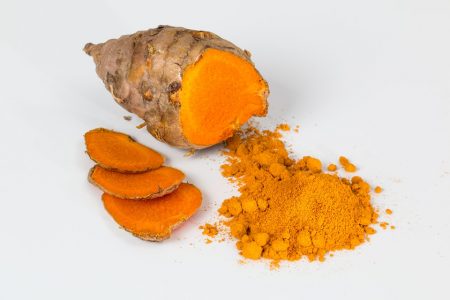
- High use of potentially allergy inducing lentils: A common skin ingredient advised across blogs and followed blindly by many is the use of Besan / Channa dal in skin cleansing ubtans. There is textual reference to this practice, but even in the texts ,this ingredient is not highly common / popular and many other lentils like Masoora, Mung bean, etc are suggested for skin cleansing.
Many people are now developing allergies to commonly used lentils like Besan and Channa Dal. We estimate atleast 5% of the population could be allergic to these lentils and they appear to stimulate pitta based allergies leading to redness, skin rashes and dryness. These lentils are also quite drying on skin.
So, it is wise to completely avoid it in a baby ubtan – BUT many companies persistently use these lentils without doing proper research on their effects on skin
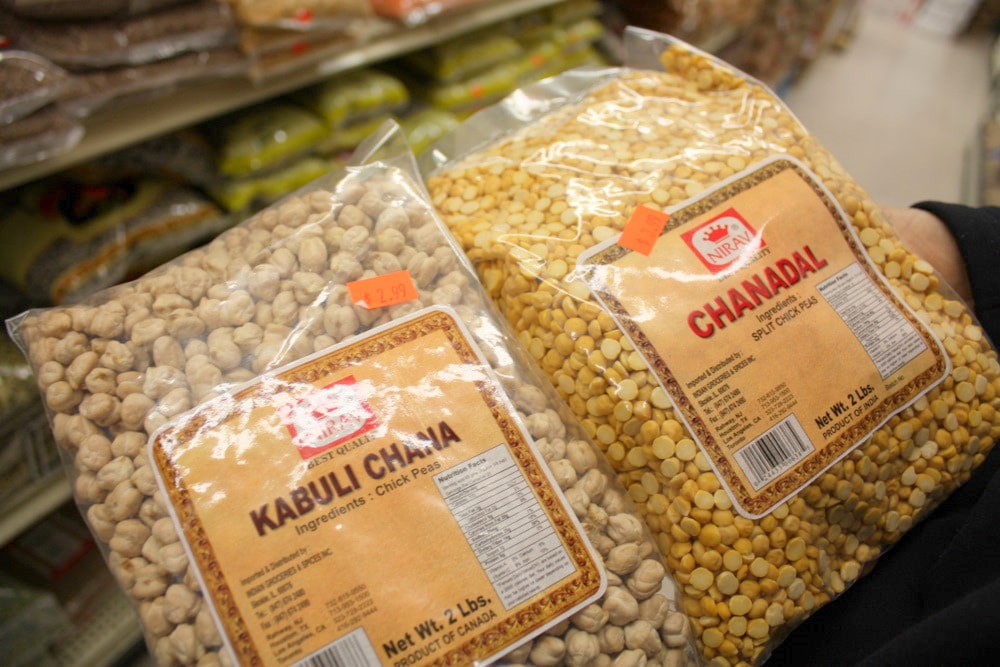
Besan and Channa Dal can cause pitta based allergies in 5% of the population
- Formulations which are not properly balanced between “Ushna” and “Sheetya” ingredients: Ayurveda teaches us that every herb has a “Veerya” – which is a heating or cooling effect. It is important to reach the right balance for babies as they are very vulnerable to drops in their core temperature.
Similarly not all herbs are the same. Many baby ubtans we have seen are much more cooling than they should be , because of the over use of sheetya veerya herbs – this is not good overall for the baby and can trigger kapha based congestion. Therefore blends must be made only after through study of the herbs and arriving at the right mix of herbs. .
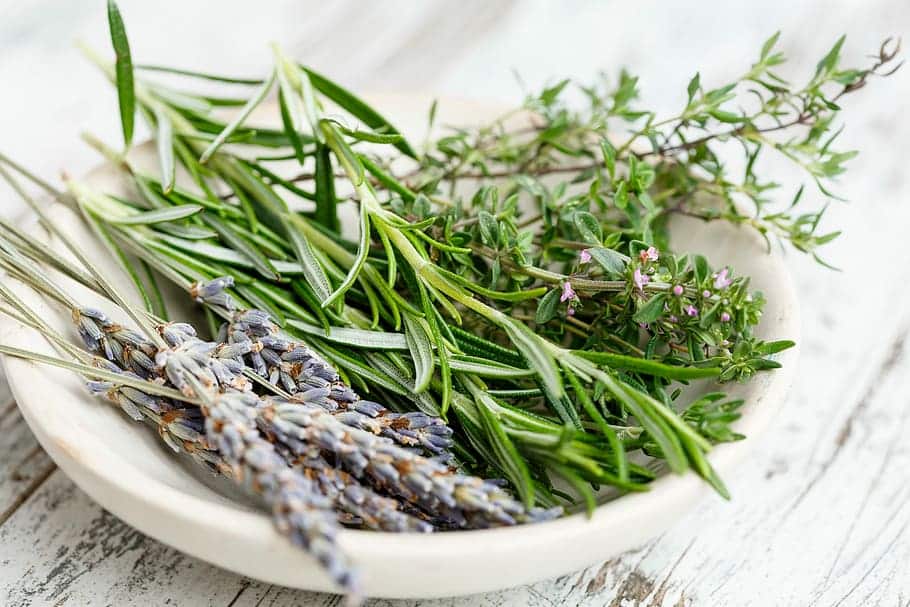
Not all herbs are the same: the properties of each herb must be carefully studied to arrive at an optimal blend
- No Seasonal variation practiced in formulation: Ayurveda teaches us that herbs should be used seasonally. We cannot use highly cooling herbs in Winter and vice versa. For example, in Vasanta Ritu, which we are currently in, Ayurveda tells us that we should use both Mushta (nutgrass) and Khadira (Khair) in the skin formulations. Both these herbs are astringent and are excellent for this Ritu to avoid any Pitta / Kapha based eruptions. However, many brands of baby ubtan do not vary their formulation properly by season – the formulations remain the same through the year.
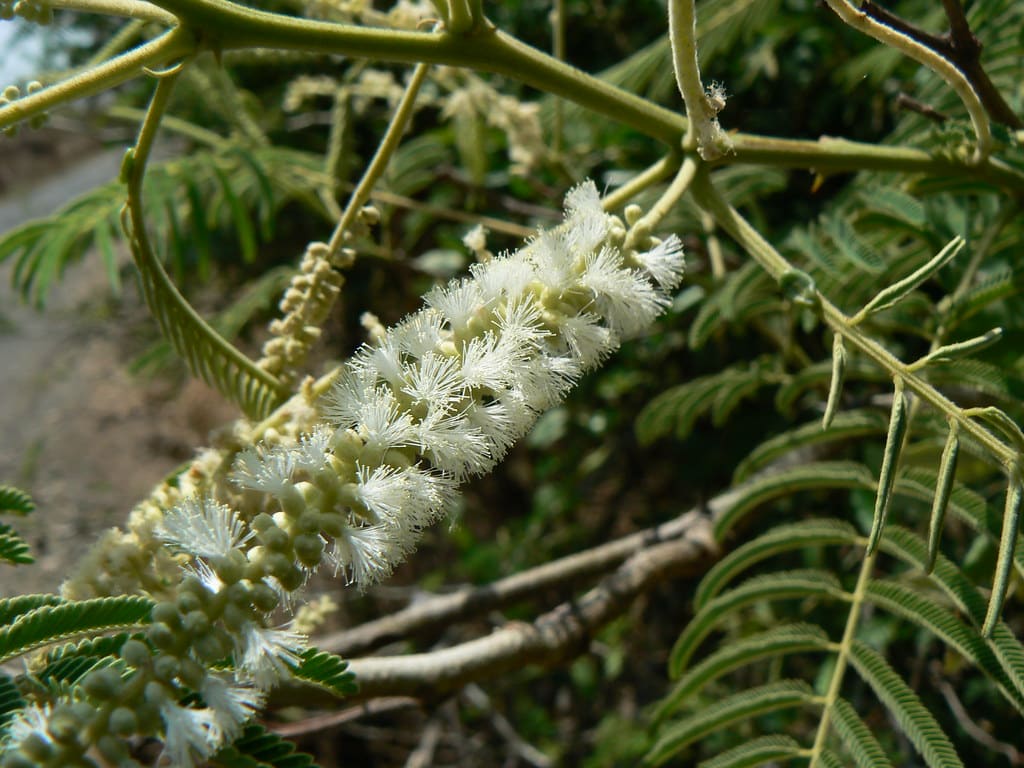
Khadira / Acacia catechu: an important skin cleansing herb that is ideal in this ritu
- No use of organically grown lentils and grains: The dependence on chemical pesticides, fertilizers, herbicides and fungicides are abnormally high in conventional farming. So, grains sourced from such chemical farming are NOT IDEAL for Baby. We are yet to come across ANY company which uses organically grown grains and lentils in their formulations.
Krya preferentially uses ONLY organically grown lentils and grains in ALL its formulations, including baby formulations. The grains are sourced from small farmholdings and are usually from heritage seeds. These grains are then painstakingly sorted, cleaned and further processed by our team to make our formulations.
Krya Baby Ubtans & Body wash powders: Ideal, traditional product for Baby’s skin
Obviously when we search for “ingredients in a baby soap” online, we expect two things. First we expect an answer on just what are these mysterious ingredients in a baby soap. Second, if we do not want to use these toxic, chemical laden products, we need an alternative.
We saw both what goes into a regular baby soap and some problems we have seen in baby ubtans. So here is why we feel Krya baby ubtans and baby bodywash powders are ideal products for your baby’s skin.
Krya offers 3 baby skin cleansing traditional powders: Krya baby girl ubtan, Krya baby boy ubtan and Krya gentle baby bodywash powder (a unisex product).
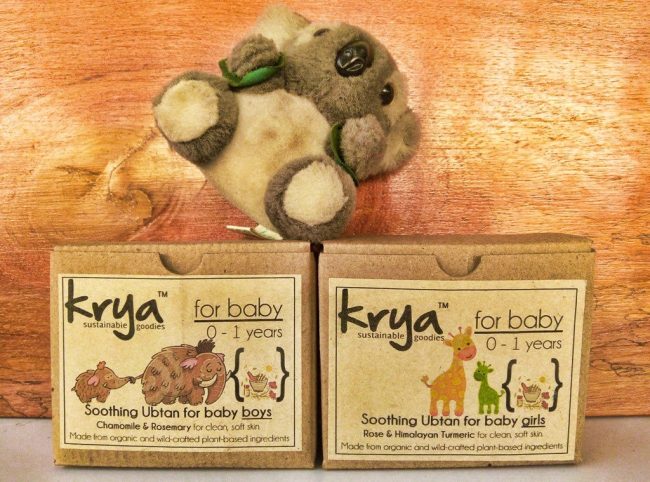
Krya baby ubtans – an ideal partner for baby’s skin
If you are looking for a special product by gender, we recommend using the Krya baby boy ubtan OR Krya baby girl ubtan. If you have twins, or would like a unisex product, you can choose the Krya Gentle baby bodywash powder. All 3 products can be used from one week of the baby’s birth.
Traditionally, a newborn baby is massaged with a traditional ayurvedic oil from the first day of birth. For one week, we use only herbal water to wash the baby. From one week onwards, we may use any of the Krya baby ubtans / bodywash products.
All Krya baby ubtans / body washes MUST be used along with one of Krya’s baby oils. This is the recommended ayurvedic practice. Oiling before bath helps nourish baby’s skin, tone and support healthy muscle growth and relieves fatigue.
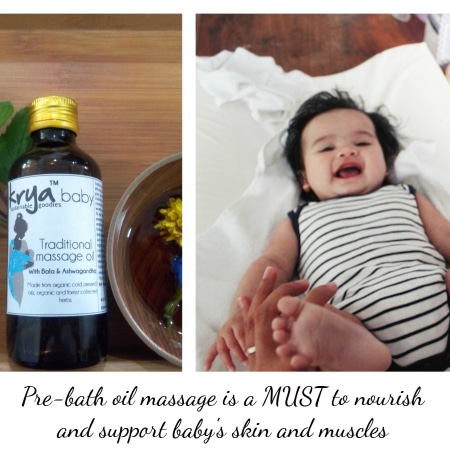
We looked at some of the drawbacks of other baby ubtans in the market. Here are the plus points behind all of Krya’s baby ubtans and bodywash powders.
Why Krya’s baby ubtans are a better choice for your baby
Balanced, well researched, authentic, proprietary formula:
The Krya baby ubtans follow a traditional, well researched formula. We take care to ensure the formula judiciously uses drying herbs like turmeric (it is present in the correct quantity). We also ensure the correct balance of Ushna and Sheetya Veerya herbs to make sure baby remains warm and does not carry a chill.
We specially use excellent divya oushadi herbs which are warming like Ram Tulasi, Krishna Tulasi, Siva Tulsi and Indian borage (Karpooravalli) in our formulations. Some of these herbs are not very widely available commercially – we take care to source these herbs to ensure our formulation is good for babies.
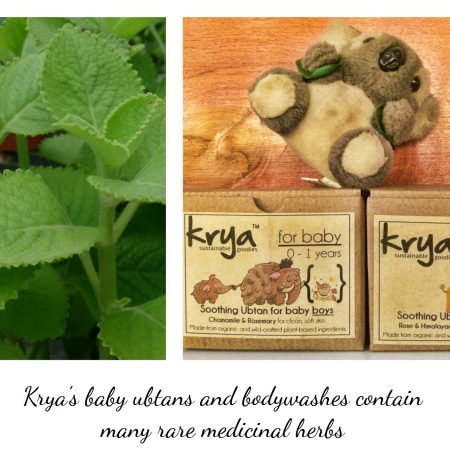
No allergy / rash inducing lentils and grains:
Although Besan and Channa dal are relatively cheaper and help cleanse skin, we do not use these lentils in Krya’s formulations to ensure that there are no allergic reactions on babies. Similarly, common allergens like peanuts and associated products are not used at Krya. However, despite all these precautions, it is always wise to do a patch test on baby’s skin before starting to use any product. This is a practice we recommend at Krya as well.
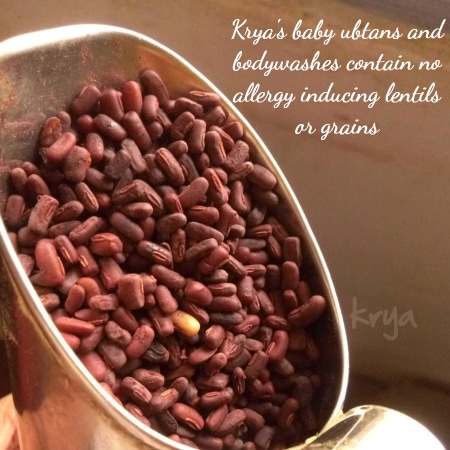
Krya’s baby ubtans have seasonal formulation variations:
All Krya’s formulations undergo seasonal variations. This ensures that baby does not develop any chills or colds from using a product that contains cooling ingredients in cold season. In Winter, our formulation is usually slightly more “warming” to account for seasonal changes.
Krya ‘s baby ubtans use organically grown lentils, grains and herbs:
All of Krya’s grains and lentils are organically grown. We source our grains from known, trusted, authentic farmers, and farming co-operatives. Many of our herbs are forest collected, which ensure that pesticide run off and contamination is minimal. The oils we use in our Baby oils are organic AND Cold pressed – ensuring very high nutrition. All fresh herbs, leaves and fruits going into our oils are ONLY ORGANICALLY grown.
This makes our supply chain process complex and demanding. Our average costs are also atleast two or three times higher because of our insistence on high quality organic produce. But, this means that your baby gets only the best and safest products on his / her skin, which makes the effort worth it.
To sum up: what are the ingredients in a baby soap and why you should care
We started this post with an innocent question: what are the ingredients in a baby soap. The exploration to this answer took us through the murky world of personal care, explored our traditional bathing practices. We also looked at the history behind the invention of soaps, and how they have taken over our minds today. Our post ended with an analysis of Baby ubtans and what makes Krya’s baby ubtans and bodywash products so unique and good for baby.
We hope this post inspired you to replace your current baby soap with the Krya baby ubtan. We also hope this post sparked off a desire to know more about what goes into products you use on yourself and in your home.
Our collective choices are very very expensive today. We are flooding our planet and our bodies with unnecessary, toxic and hazardous ingredients. We do not yet know the long-term consequence of any of these ingredients on our collective health. We hope our post gave you a thought starter on these lines. If you have any question on our baby products, please call us or write to us.
Krya Products Recommended for Baby:
- Krya baby ubtans & bodywashes – made from organic or forest collected herbs, grains and lentils . Cleans thoroughly yet is extremely soothing and gentle on baby’s skin. Can be used everyday from the 1st day of baby’s birth.
- Krya baby massage oils – made using authentic ayurvedic herbs, and organic cold pressed vegetable oils processed through a rigorous ayurvedic manufacturing process. Can be used from the time a baby is 1 week old
- Krya Pushti ayurvedic baby massage oil – traditional formula that aids a baby’s muscle development . Can be used from the time a baby is 1-2 days old. Not recommended for babies with sensitive skin, dermatitis, eczema or psoriasis. For these conditions, see below.
- Krya Palmarosa & Rose nourishing baby massage oil – Can be used from the time a baby is 1-2 days old. Recommended for dry , non oozing skin conditions like dermatitis, dry eczema. Not recommended for oozing skin conditions.
- Krya Lemongrass & Neemflower nourishing baby massage oil– Can be used from the time a baby is 1-2 days old. Recommended for dry , non oozing skin conditions like dermatitis, dry eczema (sensitive skin). Not recommended for oozing skin conditions.

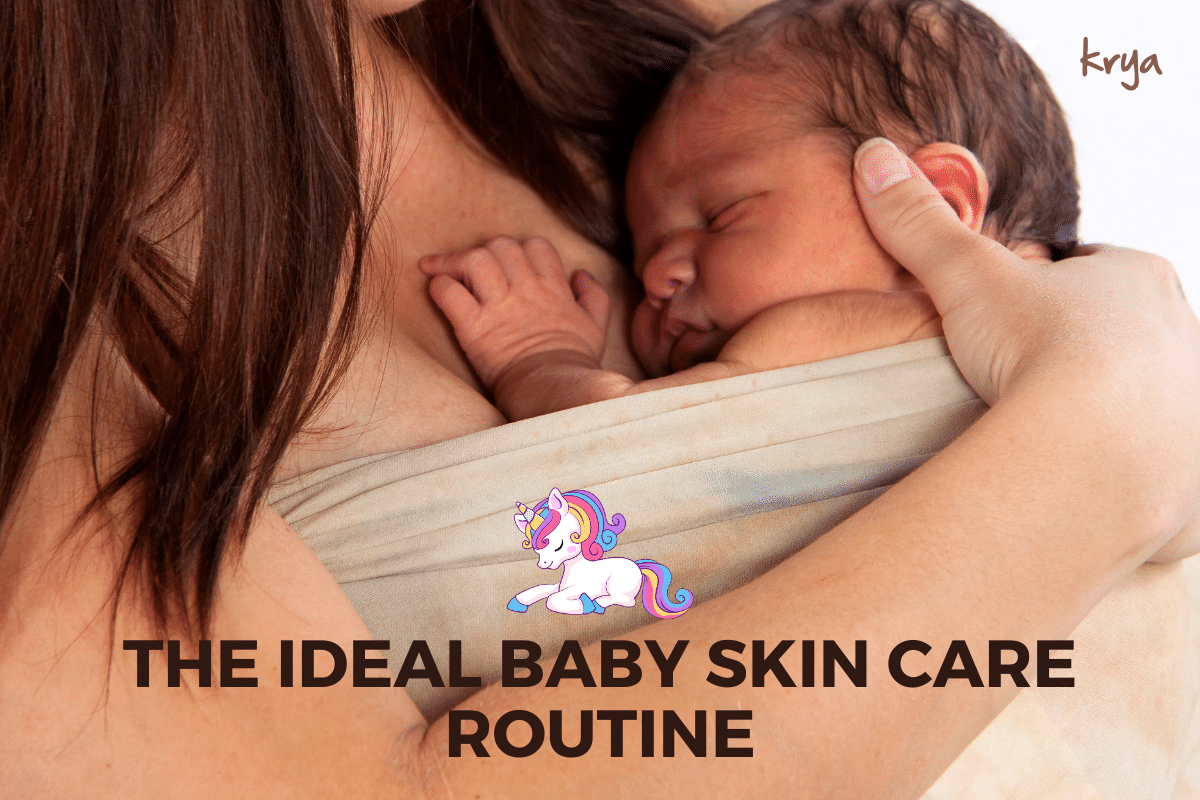



Very good informative article. Thanks for information
Very good informative article. Thanks for information
Very good informative article about baby soaps. Thanks for information